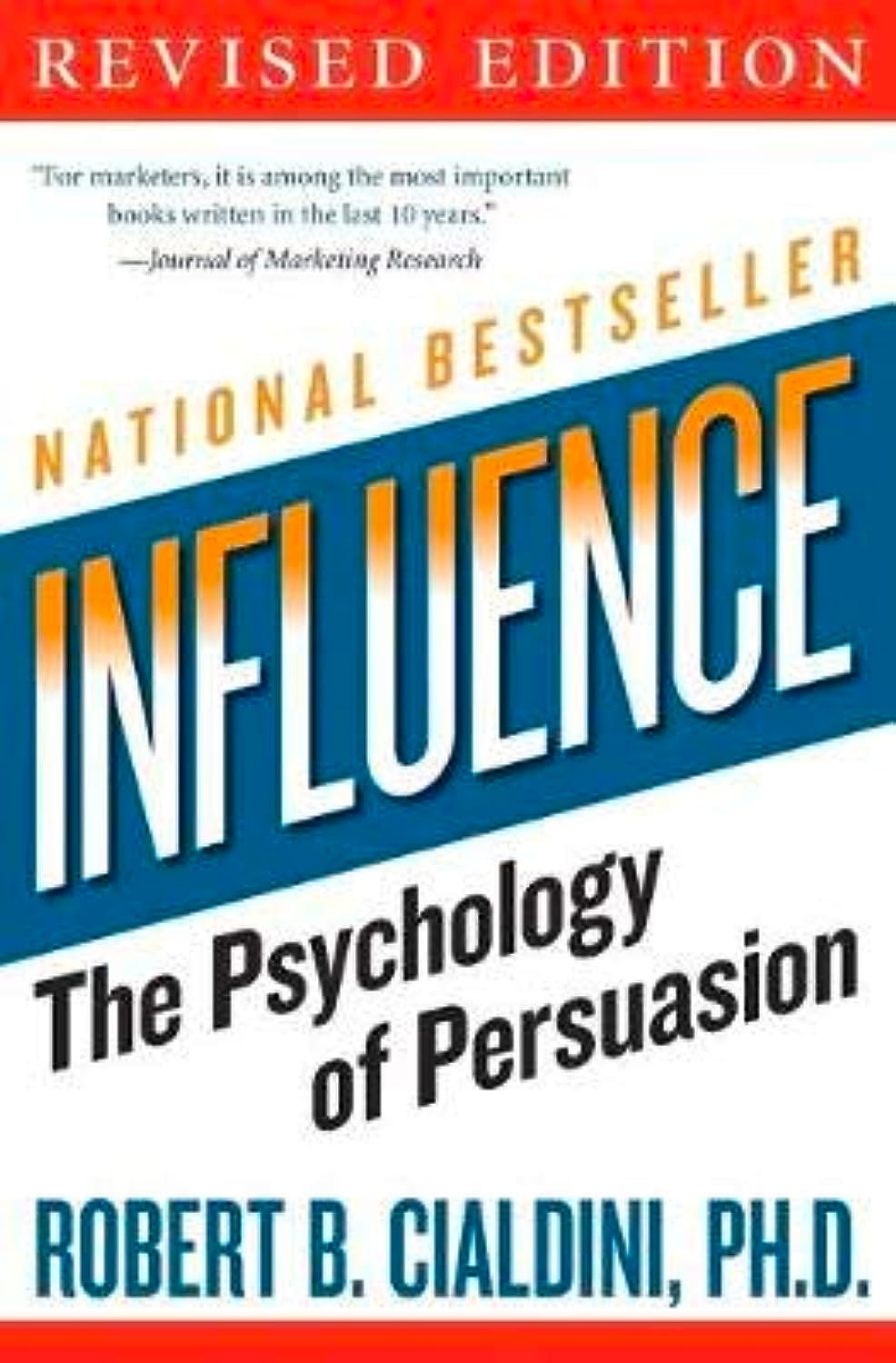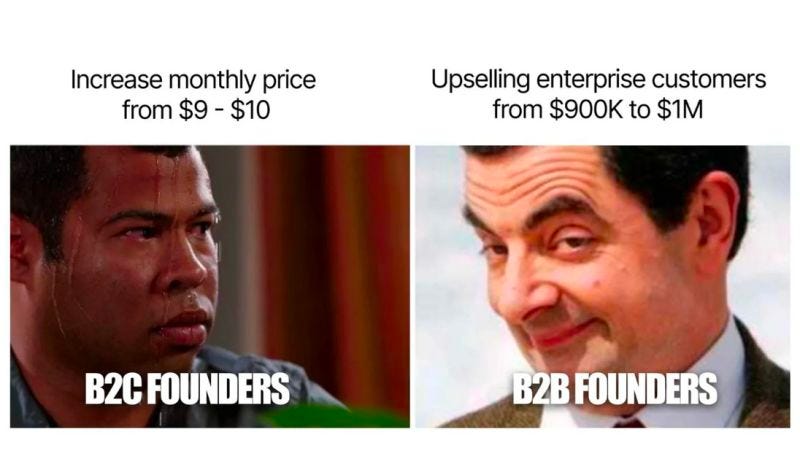Week 65 - 🧐 The Psyche of Today's B2C Buyer: Unraveling the Secrets of Their Purchasing Decisions
Quote
"The aim of marketing is to know and understand the customer so well the product or service fits him or her and sells itself." - Peter Drucker
Poll
💯 Framework // Concept // Mental Model
TL;DR:
🤝 Need for Belonging
⚖️ Anchoring Bias
🚫 Loss Aversion
🎢 Peak-End Rule
😵💫 Decision Fatigue
🐑 Social Proof
🧐 Cognitive Biases
💡 Behavioral Economics
❤️ Emotion and Experience
🌐 Holistic Approach
Unraveling Consumer Motivations
Understanding the motivations and thought processes of your B2C customers is crucial for anyone looking to influence buying decisions. While purchasing triggers may seem irrational on the surface, human psychology plays an enormous role in consumer behavior. By studying the psyche of your target audience, you can gain insight into the unseen factors driving their selections. With this knowledge, you're equipped to strategically position your product in a way that resonates at a deeper, emotional level.
In this post, we’ll explore key principles of consumer psychology to uncover what really makes B2C buyers tick. You’ll learn how to get inside the minds of your customers so you can optimize messaging, pricing, and product features for maximum appeal. Let’s dive in!
🤗 The Need for Belonging Drives Purchasing Decisions
Human beings are social creatures at their core. We all share a fundamental need to feel connected, accepted, and part of a community. Marketers leverage this desire for belonging by associating their products with specific identities, lifestyles, and values.
Consider how athletic apparel brands like Lululemon promote more than just clothing - they sell an aspirational vision of what it means to be a yogi or spin class regular. By tapping into the need to belong, they convince customers that buying their products is a ticket into an elite social circle.
Think about the social identities and affiliations your target audience strives for. Position your product as a means of satisfying that innate need for community and you’ll capture their interest on a subconscious level.
⚓ Anchoring Bias Heavily Influences Perceived Value
Anchoring bias is the psychological tendency to rely too heavily on the first piece of information provided when making decisions. In marketing, this is known as “anchoring” - establishing a reference price that shapes a buyer’s perception of value.
Studies show anchoring effects pricing dramatically. For example, an item initially presented as $100 before being reduced to $80 is perceived as more valuable than the same item presented at $80 from the outset. The original anchor price casts the lower price in a more favorable light.
To leverage anchoring bias, introduce a higher price tier or exclusive premium offering to make other options seem more reasonable by comparison. This subtly influences customers’ willingness to pay and perceived value for core products and services.
🚨 Loss Aversion Drives Emotional Purchasing Triggers
Loss aversion is another psychological concept that factors heavily into purchasing decisions. Research shows that people are far more motivated to avoid losses than acquire gains. When faced with the risk of losing something, emotions override rationality.
That’s why limited-time promotions work so well. The threat of “missing out” triggers anxiety and the desire for closure. Strategies like countdown timers and “only 5 units left” notices push buyers to act by activating feelings of potential loss.
To boost conversions, incorporate loss aversion triggers that create urgency and scarcity. But use these psychological prompts carefully - being overly aggressive may undermine trust.
🌟 The Peak-End Rule Shapes Lasting Perceptions
Known as the “peak-end rule”, people judge experiential events largely based on how they felt at the very peak and at the very end. The duration of positive and negative emotions in between receive less weighting in long-term perceptions.
This principle applies to the customer journey and shapes retrospective assessments of interactions with your brand. To leave a positive impression, optimize touch points around peaks of emotional intensity and a strong finish.
That may mean wowing users immediately after signup with rewards or personalization. Ending on a high note with exceptional service helps mask earlier friction points. Manage both beginning and endings to align with the peak-end rule.
🔄 Decision Fatigue Leads to Satisficing Behaviors
Have you ever felt so exhausted by decision making you just took the easiest acceptable option instead of the optimal one? That’s called “satisficing”, a cognitive shortcut people rely on when overwhelmed by choices.
This ties back to decision fatigue - after making many complex trade-offs, mental stamina starts fading. When facing product overload, buyers simplify choices by selecting the first sufficient (but not perfect) alternative that meets basic needs.
Prevent satisficing behaviors by minimizing unnecessary decision points in the customer journey. Eliminate options that add minimal value and highlight your core offering. Streamline choices to reduce fatigue and friction.
🐾 Social Proof Drives Herd Behavior
When uncertainty strikes, people tend to follow the crowd. Leveraging the psychological effects of social proof, brands showcase mass adoption to sway the undecided. User testimonials, celebratory milestones like “1 million subscribers”, and crowdsourced average star ratings all help reassure buyers they’re making the right choice.
The impulse to follow the herd stems from our inherent social wiring. Shared experiences build bonds, even if that “shared experience” is just buying the same popular product.
Show potential customers they’re joining a larger movement by spotlighting your product’s prevalence. But emphasize quality over quantity - a few enthusiastic reviews from credible sources often go farther than a sea of unknown users.
🧠 Cognitive Biases Distort Objective Reality
This post has covered several cognitive biases shaping buyer behavior, but there are dozens more subtly influencing decisions. Other common pitfalls include:
Confirmation bias: Drawing conclusions that align with existing beliefs/preferences.
The halo effect: Letting positive attributes in one area cause overstated perceptions in other areas.
Hyperbolic discounting: Overvaluing immediate rewards over long-term payoffs.
The Dunning-Kruger effect: Overestimating personal expertise due to a lack of self-awareness.
The availability heuristic: Basing likelihood of events on how easily they come to mind.
While cognitive biases are technically irrational, they are deeply ingrained in human psychology. Rather than fighting them, smart product managers find ways to ethically direct these mental shortcuts towards positive outcomes.
💸 Leverage Principles of Behavioral Economics
Given the sway of psychological factors, applying principles of behavioral economics is key for product managers. Traditional economic theory assumes people make perfectly rational decisions - but as we’ve discussed, real-world choices are far messier.
Behavioral economics integrates scientific insights about human behavior into economic models. This field pinpoints deviations from pure logic that lead to surprising customer responses. Software engineers speak of “edge cases” that break systems under special conditions - think of cognitive biases as the edge cases of the human mind.
Here are two other behavioral economics concepts that may prove useful:
The decoy effect: Introducing a third “decoy” choice that makes a desired option look superior by comparison.
Hyperbolic discounting: The tendency to disproportionately value immediate rewards over delayed benefits. This explains the popularity of “buy now, pay later” services.
While behavioral economics helps acknowledge the complexities of buyer decisions, ethics should be top-of-mind. You can nudge customers towards better choices, but beware overly manipulative “dark patterns” that may cross ethical lines. Ultimately, reducing friction and adding genuine value wins customer trust.
💖 Optimize for Emotion and Experience
At this point, it should be clear that purchasing is far from simply a numbers game. Price and features are certainly part of the equation, but not nearly the whole story. Ultimately, consumers buy based on emotion and experience above all else.
Leading brands back up logical arguments with powerfully designed experiences that tap into psychology. From viral social campaigns to beautifully addicting apps, they move hearts as well as minds.
Rather than getting lost in functional minutiae and incremental optimizations, keep the full arc of the customer lifecycle in sight. Chart an engaging journey fueled by emotion, social connection, and memories that transcend transactions. Build relationships, not just revenue.
While analytics and data are crucial, avoid overly reductive interpretations. Statistics alone will not capture the full context behind why customers act as they do. Synthesize quantitative insights with empathy, imagination and intuitive observation to uncover deeper human truths.
🔑 In Summary:
Here are some key tips to wrap up:
Tap into the need to belong by associating your product with aspirational identities and lifestyles.
Anchor prices and tier offerings to shape perceptions of value driven by cognitive biases.
Trigger loss aversion by introducing scarcity and urgency to prompt emotional purchases.
Optimize user journeys around peaks and ends in line with the peak-end rule.
Spotlight social proof to leverage the power of herd mentality and consensus.
Sidestep decision fatigue and satisfying behaviors by simplifying choices.
Apply principles of behavioral economics to integrate human irrationality into strategy.
Design holistic customer experiences fueled by emotion, not just utility.
The mind of the modern consumer is complex, but human needs remain universal. Fulfill core desires for connection, achievement and happiness, while minimizing pain points and friction. Earn trust by empowering customers with products that enhance their lives. Avoid manipulative tricks and stay focused on genuine value.
By taking both a data-driven and humanistic approach, you gain a multidimensional understanding of your audience. These insights allow you to tell truly resonant brand stories while also driving metrics - the best of both worlds. Lean into psychology and unlock success through a deeper connection with what makes your customers tick.
📚 Book
https://www.amazon.com/Influence-Psychology-Persuasion-Robert-Cialdini/dp/006124189X
🎧 Podcast
😎 Meme
🌟 Some of our popular newsletter editions
👩💼 Week 22 - How to create a customer persona for your product
🧠 Week 24 - 14 Behavioral Psychology Concepts Product Managers Should Know
📊 Week 27 - 📈 How to Develop and Write KPIs: A Guide for Product Managers 📋
📚 Week 6 - PM 101 (Books, Articles, Podcasts and Newsletters)
✍️ Week 29 - 💡 A Step-by-Step Guide to Crafting Killer 📝 Problem Statements
🤯 Week 16 - 6 Most Effective Problem Prioritization Frameworks for Product Managers - Part 1
🤯 Week 17 - 6 Most Effective Problem Prioritization Frameworks for Product Managers - Part 2
spend a lot of time researching on topics to give you the best content, If you like my work please like and share it with others. If you have any feedback for me or want me to write on other topics please leave a comment below. Thanks for your continued support.
✌️ It only takes one minute to complete the Net Promoter Score survey for this Post, and your feedback helps me to make each Post better.
https://siddhartha3.typeform.com/to/ApU8zlRR
If you liked reading this, feel free to click the ❤️ button on this post so more people can discover it on Substack 🙏







